VCS Document Navigator
Contents
Getting Started
Simulator Support with Technologies
Setting Up the Simulator
Verifying Your System Configuration
Obtaining a License
Setting Up Your Environment
Setting Up Your C Compiler
Creating a synopsys_sim.setup File
The Concept of a Library In VCS MX
Library Name Mapping
Including Other Setup Files
Using SYNOPSYS_SIM_SETUP Environment Variable
Displaying Setup Information
Displaying Design Information Analyzed Into a Library
Using the Simulator
Basic Usage Model
Default Time Unit and Time Precision
Searching Identifiers in the Design Using UNIX Commands
Examples
VCS MX Flow
Three-step Flow
Analysis
Using vhdlan
Commonly Used Analysis Options
Using vlogan
Commonly Used Analysis Options
Analyzing the Design to Different Libraries
Elaboration
Using vcs
Commonly Used Options
Simulation
Interactive Mode
Batch Mode
Commonly Used Runtime Options
Two-step Flow
Compilation
Using vcs
Commonly Used Options
Simulation
Interactive Mode
Batch Mode
Commonly Used Runtime Options
Elaborating the Design
Compiling or Elaborating the Design in Debug Mode
Compiling or Elaborating the Design in Optimized Mode
Dynamic Loading of DPI Libraries at Runtime
The Use Model
Dynamic Loading of PLI Libraries at Runtime
Key Elaboration Features
Initializing Verilog Memories and Registers
Use Model
Initializing Verilog Variables, Memories, and MDAs in Parts of the Design
Example
Changing or Adding Initialized Parts of the Design at Runtime
Dumping Initialized Values in a File
Restricting +vcs+initreg Initialization to Either Registers or Memories
Overriding Generics and Parameters
Usage Model
Checking for X and Z Values In Conditional Expressions
Enabling the Checking
Filtering Out False Negatives
Cross Module References (XMRs)
hdl_xmr Procedure and $hdl_xmr System Task
Data Types Supported
VHDL Referencing Verilog using hdl_xmr procedure
Verilog Referencing VHDL objects using $hdl_xmr
Usage Model
$hdl_xmr Support for VHDL Variables
Use Model
Datatype Support and Usage Examples
VCS MX V2K Configurations and Libmaps
Library Mapping Files
Resolving ‘include Compiler Directives
Configurations
Configuration Syntax
Use Model
Example
Supported Features
Limitations of Configurations
Using the -liblist Option
Design Cells and Library Cells
Library Search Order Rules
Library Search Order Rules for MX Designs
Library Search Order Rules for Verilog or SystemVerilog Designs
Example Testcase Files
Usage Examples for Library Search Order Rules for Verilog or SystemVerilog Designs
Usage Examples for RULE1
Usage Examples for RULE2
Usage Examples for RULE3
Usage Examples for RULE7
Usage Examples for RULE8
Usage Examples for Library Search Order Rules for Verilog or SystemVerilog Designs Without Configuration File
Lint Warning Message for Missing ‘endcelldefine
Error/Warning/Lint Message Control
Controlling Error/Warning/Lint Messages Using Compile-Time Options
Controlling Error Messages
Upgrading Lint and Warning Messages to Error Messages
Controlling Warning Messages
Upgrading Lint Messages to Warning Messages
Controlling Lint Messages
Suppressing Lint, Warning, and Error Messages
Error Conditions and Messages That Cannot Be Disabled
Using Message Control Options Together
Message Control Examples
Controlling Error/Warning/Lint Messages Using a Configuration File
Controlling Lint Messages
Controlling Warning Messages
Controlling Error Messages
Upgrading Lint and Warning Messages to Error Messages
Downgrading Error Messages to Warning Messages
Suppressing All Types of Messages
Enabling and Disabling by Source File
Enabling and Disabling by Module Definition
Enabling and Disabling by Subhierarchy
Extracting the Files Used in Elaboration
XML File Format
Example
Limitations
Simulating the Design
Using DVE
Using UCLI
ucli2Proc Command
Options for Debugging Using DVE and UCLI
Reporting Forces/Injections in a Simulation
Use Model
Reporting Force/Deposit/Release Information
Handling Forces on Bit/Part Select and MDA Word
Handling Forces on Concatenated Codes
Output Format
Header Section
Event List Section
Usage Example
Limitations
Key Runtime Features
Overriding Generics at Runtime
Usage Model
Example
Passing Values from the Runtime Command Line
VCS MX Supports simv -f
Limitations
Specifying a Long Time Before Stopping The Simulation
The Unified Simulation Profiler
The Use Model
Omitting Profiling at Runtime
Omitting the -simprofile Runtime Option
Omitting Profile Report Writing after Runtime
Specifying a Directory for the Profile Database
Post Simulation Profile Information
Specifying the Name of the Profile Report
Running the profrpt Profile Report Generator
Specifying Views
The Snapshot Mechanism
Specifying Timeline Reports
Recording and Viewing Memory Stack Traces
Reporting PLI, DPI, and DirectC Function Call Information
Compiling and Running the Profiler Example
Profiling Time Used by Various Parts of the Design
Profiling Memory Used by Various Parts of the Design
The Output Directories and Files
The Enhanced Accumulative Views
The Comparative View
The Caller-Callee Views
HTML Profiler Reports
Hypertext Links to the Source Files
Single Text Format Report
Stack Trace Report Example
SystemC Views
Constraint Profiling Integrated in the Unified Profiler
Changes to the Use Model for Constraint Profiling
The Time Constraint Solver View
The Memory Constraint Solver View
Performance/Memory Profiling for Coverage Covergroups
Use Model
Example
HTML Profiler Reports
Default Summary View
Time/Memory Summary View
Time/Memory Module View
Time/Memory Construct View
Time/Memory Covergroup View
Limitations
Diagnostics
Using Diagnostics
Using –diag Option
Syntax
Using Smartlog
Compile-time Diagnostics
Libconfig Diagnostics
Example
Timescale Diagnostics
Example
Example 1: Module has `timescale
Example 2: Passing -timescale from vcs command-line
Runtime Diagnostics
Diagnostics for VPI/VHPI PLI Applications
Keeping the UCLI/DVE Prompt Active After a Runtime Error
UCLI Use Model
Automating User Actions on Failure
DVE Use Model
UCLI Usage Example
Limitations
Diagnosing Quickthread Issues in SystemC
Quickthread Overruns Its Allocated Stack
Limitations
Simulation Runs Out of Memory Due to Quickthread Stacks
Reducing or Turning Off Redzones
Post-processing Diagnostics
Using the vpdutil Utility to Generate Statistics
The vpdutil Utility Syntax
Options
Options for VPD File Information
Options for Design Information
Options for Value Change Information
VCS Multicore Technology Application Level Parallelism
Enabling Multicore Technology Application Level Parallelism
Multicore SAIF File Dumping
Limitations
VPD, VCD, and EVCD Utilities
Advantages of VPD
Dumping a VPD File
Using System Tasks
Enable and Disable Dumping
Override the VPD Filename
Dump Multi-dimensional Arrays and Memories
Syntax for Specifying MDAs
Examples
Using $vcdplusmemorydump
Capture Delta Cycle Information
Dumping an EVCD File
Limitations
Post-processing Utilities
The vcdiff Utility
The vcdiff Utility Syntax
The vcdiff Utility Output Example
The vcat Utility
The vcat Utility Syntax
Generating Source Files From VCD Files
Writing the Configuration File
The vcsplit Utility
The vcsplit Utility Syntax
The vcd2vpd Utility
Options for specifying EVCD options
The vpd2vcd Utility
The Command File Syntax
Limitations
The vpdmerge Utility
Restrictions
Limitations
Value Conflicts
The vpdutil Utility
Performance Tuning
Compile-time Performance
Incremental Compilation
Compile Once and Run Many Times
Parallel Compilation
Runtime Performance
Using Radiant Technology
Compiling With Radiant Technology
Applying Radiant Technology to Parts of the Design
The Configuration File Syntax
Configuration File Statement Examples
Known Limitations
Potential Differences in Coverage Metrics
Compilation Performance With Radiant Technology
Improving Performance When Using PLIs
Usage Model
Impact on Performance
Obtaining VCS Consumption of CPU Resources
Use Model
Compile time
Simulation Time
Using X-Propagation
Introduction to X-Propagation
Guidelines for Running X-Propagation Simulations
Using the X-Propagation Simulator
Specifying X-propagation Merge Mode
Compile Time Diagnostic Report
Querying X-Propagation at Run Time
X-Propagation Instrumentation Report
Enabling Automatic Flip-Flop Recognition
X-Propagation Configuration File
X-Propagation Configuration File Syntax
X-Propagation Instrumentation Definition
X-Propagation Merge Mode Specification
Xprop Instrumentation Control
Process Based X-Propagation Exclusion
Bounds Checking
Changing $uniq_prior_checkoff/on Usage Model
Time Zero Initialization
Handling Non-pure Functions Due to Static Lifetime
X-Propagation Code Examples
If Statement
Case Statement
Edge Sensitive Expression
Latch
Limitations
Gate-level Simulation
SDF Annotation
Using Unified SDF Feature
Using $sdf_annotate System Task
Using -xlrm Option for SDF Retain, Gate Pulse Propagation, and Gate Pulse Detection Warning
Using Optimistic Mode in SDF
Using Gate Pulse Propagation
Generating Warnings During Gate Pulses
Precompiling an SDF File
Creating the Precompiled Version of the SDF file
Precompiling SDF alone Without Compiling Design Files
Writing Precompiled SDF to a Different Directory
SDF Configuration File
Delay Objects and Constructs
SDF Configuration File Commands
approx_command
mtm_command
scale_command
SDF Example with Configuration File
Delays and Timing
Transport and Inertial Delays
The Inertial Delay Implementation
Enabling Transport Delays
Pulse Control
Pulse Control with Transport Delays
Pulse Control with Inertial Delays
Specifying Pulse on Event or Detect Behavior
Specifying the Delay Mode
Using the Configuration File to Disable Timing
Using the timopt Timing Optimizer
Editing the timopt.cfg File
Editing Potential Sequential Device Entries
Editing Clock Signal Entries
Using Scan Simulation Optimizer
ScanOpt Config File Format
ScanOpt Assumptions
Combinational Path Delays
Length of Test Cycles
Negative Timing Checks
The Need for Negative Value Timing Checks
The $setuphold Timing Check Extended Syntax
Negative Timing Checks for Asynchronous Controls
The $recrem Timing Check Syntax
Enabling Negative Timing Checks
Other Timing Checks Using the Delayed Signals
Checking Conditions
Toggling the Notifier Register
SDF Back-annotation to Negative Timing Checks
How VCS MX Calculates Delays
Using VITAL Models and Netlists
Validating and Optimizing a VITAL Model
Validating the Model for VITAL Conformance
Verifying the Model for Functionality
Optimizing the Model for Performance and Capacity
Re-Verifying the Model for Functionality
Understanding Error and Warning Messages
Distributing a VITAL Model
Simulating a VITAL Netlist
Applying Stimulus
Overriding Generic Parameter Values
Understanding VCS MX Error Messages
System Errors
Model and Netlist Errors
Viewing VITAL Subprograms
Timing Back-annotation
VCS MX Naming Styles
Negative Constraints Calculation (NCC)
Simulating in Functional Mode
Understanding VITAL Timing Delays and Error Messages
Negative Constraint Calculation (NCC)
Conformance Checks
Type Checks
Syntactic and Semantic Checks
Error Messages
Coverage
Code Coverage
Functional Coverage
Options For Coverage Metrics
Using SystemVerilog
Usage Model
Using UVM With VCS
Update on UVM-1.0
Update on UVM-EA
Natively Compiling and Elaborating UVM-1.0
Natively Compiling and Elaborating UVM-1.1d
Compiling the External UVM Library
Using the -ntb_opts uvm Option
Specifying External uvm_dpi.cc Source
Explicitly Specifying UVM Files and Arguments
Accessing HDL Registers Through UVM Backdoor
Generating UVM Register Abstraction Layer Code
Recording UVM Transactions
Debugging UVM Testbench Designs Using DVE
Recording UVM Phases
UVM Template Generator (uvmgen)
Using Mixed VMM/UVM Libraries
Migrating from OVM to UVM
Where to Find UVM Examples
Where to Find UVM Documentation
UVM-1.1d Documentation
UVM-1.0 Documentation
UVM-VMM Interop Documentation
Using VMM with VCS
Using OVM with VCS
Native Compilation and Elaboration of OVM 2.1.2
Compiling the External OVM Library
Using the -ntb_opts ovm Option
Explicitly Specifying OVM Files and Arguments
Recording OVM Transactions
Debugging SystemVerilog Designs
Functional Coverage
Newly implemented SystemVerilog Constructs
Modport Expressions in an Interface
Limitations
Interface Classes
Difference Between Extends and Implements
Cast and Interface Class
Name Conflicts and Resolution
Name Conflicts During Implementation
Name Conflicts During Inheritance
Interface Class and Randomization
Package Exports
Severity System Tasks as Procedural Statements
Width Casting Using Parameters
Recently Implemented SystemVerilog Constructs
The std::randomize() Function
Syntax
Description
Example
SystemVerilog Bounded Queues
wait() Statement with a Static Class Member Variable
Parameters and Localparams in Classes
SystemVerilog Math Functions
Streaming Operators
Packing (Used on RHS)
Primitive Operation
Streaming Concatenation
Unpacking (Used on LHS)
Primitive operation
Streaming Concatenation
Packing and Unpacking
Propagation and force Statement
Error Conditions
Structures with Streaming Operators
Constant Functions in Generate Blocks
Support for Aggregate Methods in Constraints Using the “with” Construct
Debugging During Initialization SystemVerilog Static Functions and Tasks in Module Definitions
Example
Explicit External Constraint Blocks
Using an Empty Constraint Block
The Explicit Form in Previous Releases
Generate Constructs in Program Blocks
Error Condition for Using a Genvar Outside of its Generate Block
Randomizing Unpacked Structs
Using the Scope Randomize Method std::randomize()
Using the Class Randomize Method randomize()
Disabling and Re-enabling Randomization
Using In-line Random Variable Control
Limitation
Making wait fork Statements Compliant with the SV LRM
Making disable fork Statements Compliant with the SV LRM
Extensions to SystemVerilog
Unique/Priority Case/IF Final Semantic Enhancements
Using Unique/Priority Case/If with Always Block or Continuous Assign
Using Unique/Priority Inside a Function
System Tasks to Control Warning Messages
Single-Sized Packed Dimension Extension
Covariant Virtual Function Return Types
Self Instance of a Virtual Interface
UVM Example
Error Condition for Using a Genvar Outside of its Generate Block
Using a Package in a SystemVerilog Module, Program, and Interface Header
Using OpenVera Native Testbench
Usage Model
Example
Usage Model
Importing VHDL Procedures
Exporting OpenVera Tasks
Using Template Generator
Example
Design Description
Generating the Testbench Template, the Interface, and the Top- level Verilog Module from the Design
Testbench Development and Description
Interface Description
Interface for SRAM, sram.if.vrh
Top-level Verilog Module Description
Compiling Testbench With the Design And Running
Key Features
Multiple Program Support
Configuration File Model
Configuration File
Usage Model for Multiple Programs
NTB Options and the Configuration File
Class Dependency Source File Reordering
Circular Dependencies
Dependency-based Ordering in Encrypted Files
Using Encrypted Files
Functional Coverage
Using Reference Verification Methodology
Limitations
Aspect Oriented Extensions
Aspect-Oriented Extensions in SV
Processing of AOE as a Precompilation Expansion
Weaving advice into the target method
Pre-compilation Expansion details
Precedence
Adding of Introductions
Weaving of advices
Symbol Resolution Details:
Examples:
hide_list details
Examples
Using Constraints
Inconsistent Constraints
Constraint Debug
Partition
Randomize Serial Number
Solver Trace
Constraint Profiler
Test Case Extraction
Using multiple +ntb_solver_debug arguments
Summary for +ntb_solver_debug
+ntb_solver_debug=serial
+ntb_solver_debug=trace
+ntb_solver_debug=profile
+ntb_solver_debug=extract
Constraint Debug Using DVE
Constraint Guard Error Suppression
Error Message Suppression Limitations
Flattening Nested Guard Expressions
Pushing Guard Expressions into Foreach Loops
Array and XMR Support in std::randomize()
Error Conditions
XMR Support in Constraints
XMR Function Calls in Constraints
State Variable Index in Constraints
Runtime Check for State Versus Random Variables
Array Index
Using DPI Function Calls in Constraints
Invoking Non-pure DPI Functions from Constraints
Using Foreach Loops Over Packed Dimensions in Constraints
Memories with Packed Dimensions
Single Packed Dimension
Multiple Packed Dimensions
MDAs with Packed Dimensions
Single Packed Dimension
Multiple Packed Dimensions
Just Packed Dimensions
The foreach Iterative Constraint for Packed Arrays
Randomized Objects in a Structure
Support for Typecast in Constraints
Syntax
Description
Examples
Strings in Constraints
SystemVerilog LRM P1800-2012 Update
Using Soft Constraints in SystemVerilog
Using Soft Constraints
Soft Constraint Prioritization
Within a Single Class
Soft Constraints Defined in Classes Instantiated as rand Members in Another Class
Soft Constraints Inheritance Between Classes
Soft Constraints in AOP Extensions to a Class
Soft Constraints in View Constraints Blocks
Discarding Lower-Priority Soft Constraints
Unique Constraints
Extensions for SystemVerilog Coverage
Support for Reference Arguments in get_coverage()
get_inst_coverage() method
get_coverage() method
Functional Coverage Methodology Using the SystemVerilog C/C++ Interface
SystemVerilog Functional Coverage Flow
Covergroup Definition
SystemVerilog (Covergroup for C/C++): covg.sv
C Testbench: test.c
Approach #1: Passing Arguments by Reference
Approach #2: Passing Arguments by Value
Compile Flow
Runtime
C/C++ Functional Coverage API Specification
Parameters
Description
Parameters
Description
Parameters
Description
OpenVera-SystemVerilog Testbench Interoperability
Scope of Interoperability
Importing OpenVera types into SystemVerilog
Data Type Mapping
Mailboxes and Semaphores
Events
Strings
Enumerated Types
Integers and Bit-Vectors
Arrays
Structs and Unions
Connecting to the Design
Mapping Modports to Virtual Ports
Virtual Modports
Importing Clocking Block Members into a Modport
Semantic Issues with Samples, Drives, and Expects
Notes to Remember
Blocking Functions in OpenVera
Constraints and Randomization
Functional Coverage
Usage Model
Limitations
Using SystemVerilog Assertions
Using SVAs in the HDL Design
Using Standard Checker Library
Instantiating SVA Checkers in Verilog
Instantiating SVA Checkers in VHDL
Inlining SVAs in the Verilog Design
Usage Model
Inlining SVA in the VHDL design
Usage Model
Controlling SystemVerilog Assertions
Elaboration and Runtime Options
Concatenating Assertion Options
Assertion Monitoring System Tasks
Using Assertion Categories
Using System Tasks
Using Assertion System Tasks
Using Attributes
Stopping and Restarting Assertions By Category
Starting and Stopping Assertions Using Assertion System Tasks
Viewing Results
Using a Report File
Enhanced Reporting for SystemVerilog Assertions in Functions
Introduction
Usage Model
Name Conflict Resolution
Checker and Generate Blocks
Controlling Assertion Failure Messages
Introduction
Options for Controlling Default Assertion Failure Messages
Options to Control Termination of Simulation
Option to Enable Compilation of OVA Case Pragmas
Reporting Values of Variables in the Assertion Failure Messages
Limitations
Using SystemVerilog Constructs Inside vunits
Limitations
List of supported IEEE Std. 1800-2009 Compliant SVA Features
Enabling IEEE Std. 1800-2009 Compliant Features
Limitations
SystemVerilog Assertions Limitations
Debug Support for New Constructs
Note on Cross Features
Using Property Specification Language
Including PSL in the Design
Examples
Usage Model
Examples
PSL Assertions Inside VHDL Block Statements in Vunit
Introduction
Example
Use Model
Limitations
PSL Macro Support in VHDL
Using the %for Construct
Using the %if Construct
Using Expressions with %if and %for Constructs
PSL Macro Support Limitations
Using SVA Options, SVA System Tasks, and OV Classes
Limitations
Using SystemC
Overview
The syscan Utility
VCSSYSTEMC Macro for Compiling VCS-Specific Code
Verilog Design Containing Verilog/VHDL Modules and SystemC Leaf Modules
Usage Model
Input Files Required
Generating Verilog/VHDL Wrappers for SystemC Modules
Creating Verilog/VHDL Wrapper from a SystemC Header File
Supported Port Data Types
Example
Compiling Interface Models with acc_user.h and vhpi_user.h
Controlling Time Scale and Resolution in a SystemC
Automatic Adjustment of the Time Resolution
Limitations
Setting Time Scale/Resolution of Verilog or VHDL Kernel
Setting Time Scale/Resolution of SystemC Kernel
Adding a Main Routine for Verilog-On-Top Designs
SNPS_REGISTER_SC_MAIN
SystemC Designs Containing Verilog and VHDL Modules
Usage Model
Input Files Required
Generating a SystemC Wrapper for Verilog Modules
Generating A SystemC Wrapper for VHDL Design
Example
Elaboration Scheme
SNPS_REGISTER_SC_MODULE
VHDL Design Containing Verilog/VHDL Modules and SystemC Leaf Modules
Usage Model
Input Files Required
Generating a Verilog/VHDL Wrapper for SystemC Modules
Example
Use Model
SystemC Only Designs
Usage Model
Restrictions
Supported and Unsupported UCLI/DVE and CBug Features
Controlling TimeScale Resolution
Setting Timescale of SystemC Kernel
Automatic Adjustment of Time Resolution
Considerations for Export DPI Tasks
Use syscan -export_DPI [function-name]
Use syscan -export_DPI [Verilog-file]
Use a Stubs File
Using options -Mlib and -Mdir
Specifying Runtime Options to the SystemC Simulation
Using a Port Mapping File
Automatic Creation of Portmap File
Using a Data Type Mapping File
Combining SystemC with Verilog Configurations
Verilog-on-Top, SystemC and/or VHDL Down
Compiling a Verilog/SystemC Design
Compiling a Verilog/SystemC+VHDL Design
SystemC-on-Top, Verilog and/or VHDL Down
Compiling a SystemC/Verilog Design
Compiling a SystemC/Verilog+VHDL Design
Limitations
Parameters
Parameters in Verilog
Parameters in VHDL
Parameters in SystemC
Verilog-on-Top, SystemC-Down
VHDL-on-Top, SystemC-down
SystemC-on-Top, Verilog or VHDL down
Namespace
Parameter Specification as VCS Elaboration Arguments
Debug
Limitations
Debugging Mixed Simulations Using DVE or UCLI
Transaction Level Interface
Interface Definition File
Generation of the TLI Adapters
Transaction Debug Output
Instantiation and Binding
Supported Data Types of Formal Arguments
Miscellaneous
Delta-Cycles
Using a Customized SystemC Installation
Compatibility with OSCI SystemC
Compiling Source Files
Limitations
Using Posix Threads or Quickthreads
VCS Extensions to SystemC Library
Installing VG GNU Package
Support for SystemC 2.3
Static and Dynamic Linking
Static Linking in VCS MX
Dynamic Linking in VCS MX (For C/C++ Files)
Dynamic Linking in VCS MX (For SystemC Files)
LD_LIBRARY_PATH Environment Variable
Limitations
Verilog wrapper needed for pure VHDL-top-SystemC down
Incremental Compile of SystemC Source Files
Full Build from Scratch
Full Incremental Build
Partial Build with Object Files
Partial Build with Shared Libraries
Updating the Shared Library
Using Different Libraries
Partial Build Invoked with VCS
Partial Build if Just One Shared Library is Updated
Adding or Deleting SC Source Files in Shared Library
Changing From a Shared Library Back to Object Files
Dependency Checking of SystemC Source Files
Default Setting
Example
VCS Command
Check Dependency at Elaboration
Check Dependency at Incremental Compile (vcs –sysc=incr)
Option –sysc=dep Applies to all libs
Selecting Specific libs
Example
VCS Command
Check Dependency at Elaboration
Check Dependency at Incremental Compile (vcs –sysc=incr)
Option –sysc=nodep Applies to all libs, Except csrc
Example
VCS Command
Check Dependency at Elaboration
Check Dependency at Incremental Compile (vcs –sysc=incr)
TLI Direct Access
Accessing SystemC Members from SystemVerilog
TLI Adaptor
Instantiating the TLI adaptor in SV
Direct Variable Access
Calling SystemC Member Function
Example
Arguments of Type char* Used in Blocking Member Functions
Example
Supported Data Types
Basic Types
SystemC char* Type
Example
SystemC Channel Types
Example
Arrays
Example
SC_FIFO
Example
Non-SystemC Classes
Sub-classes
Example
Example
Name Clashes
var Name Clashes
var Name Clashes with Method Names
Error Handling
Locating SystemC Instance
Out-of-array Accesses
Compile Flow
Syntax of TLI File
Rules for TLI File/Syntax
Example
Debug Flow
Accessing Struct or Class Members of a SystemC Module from SystemVerilog
Enhancements to TLI for Providing Access to SystemC/ C++ Class Members from SystemVerilog
Accessing Struct or Class Members of a SystemC Module Object from SystemVerilog
Example
Generating Adaptor Code
Accessing Generic C++ Struct or Class
C++ Functions TLI_UNREGISTER_ID() and TLI_REGISTER_ID()
SystemVerilog Function attach_by_id()
SystemVerilog set or get function
Example
Extensions of TLI Input File
Invoking Pack or Unpack Adaptor Code Generation
Limitations
Accessing Verilog Variables from SystemC
Usage Model
Access Functions
Supported Data Types
Unsupported Data Types
Usage Example
Type Conversion Mechanism
Accessing SystemVerilog Functions and Tasks from SystemC
Introduction
Usage Model
Function Declaration Hierarchy
Passing Arguments
Supported Types
Usage Example
Compile Flow
Usage Guidelines
Limitations
Accessing SystemC Members from SystemVerilog Using the tli_get_ or tli_set_ Functions
Using the tli_get_ and tli_set_ Functions
Prototypes of tli_get_ and tli_set_ Functions
Supported Data Types
Sub-Members
Unsupported Data Types
Member Variables
Example
Type Conversion Mechanism
Compile Flow
Using tli_D Option
Example
Modifying SystemC Code
Example
Modifying SystemVerilog Code
Example
TLI Directive (create directaccess)
Generating C++ Struct Definition from SystemVerilog Class Definition
Use Model for Generating C++ Struct from SystemVerilog Class
Data Type Conversion from SystemVerilog to C++
Example for Generating C++ Struct from SystemVerilog Class
Limitations
Supporting Designs with Donut Topologies
Example
Exchanging Data Between SystemVerilog and SystemC Using Byte Pack/Unpack
Use Model
Supported Data Types
Unsupported Data Types
Mapping of SystemC/C++ and SystemVerilog/VMM Data Types
Usage Examples
Using the Pack Operator
Using Unpack Operator
Using Pack and Unpack Functions
Using Code Generator
Naming Convention
Input Files
TLI File
C source file containing the struct or class
Output Files
Generated SV class
Generated C files
Supported Data types for Automatic Code Generation
Correcting the Generated Files
Compile Flow
Usage Example for Code Generator
Code Generation
Manual Modifications
SystemC Module Using Byte Packing
Verilog Module Using Byte Packing
Building Simulation
Using Direct Program Interface Based Communication
Example
Limitations of Using DPI-based Communication Between Verilog and SystemC
Using OPT Interface-Based Communication
OPT Interface-Based Communication Limitations
Improving VCS-SystemC Compilation Speed Using Precompiled C++ Headers
Introduction to Precompiled Header Files
Using Precompiled Header Files
Example to Use the Precompiled Header Files
Example
Invoking the Creation of Precompiled Header Files
Limitations
Limitations of GNU Precompiled Header Files
Limitations of syscan -prec
Limitations of using -prec with path
Limitations of Sharing Precompiled Header Files
Increasing Stack and Stack Guard Size
Increasing the Stack Size
Example
Increasing the Stack Guard Size
Example
Guidelines to Diagnose Stack Overrun
Debugging SystemC Runtime Errors
Debugging SystemC Kernel Errors
Troubleshooting Your Elaboration Errors
Example
Troubleshooting Your Runtime Errors
Function cbug_stop_here()
Limitations
Diagnosing Quickthread Issues
Using HDL and SystemC Sync Loops
The Coarse-Grained Sync Loop (blocksync)
The Fine-Grained Sync Loop (deltasync)
Run Time
Alignment of Delta Cycles
Example Syntax
Restrictions
Restrictions That No Longer Apply
Newsync is Now Default
Advantages of deltasync Loop
Simulation Differences Between blocksync and deltasync Loop
Scenario 1 - Mismatched Time Resolution
Scenario 2 - Differences During Initialization Phase of the Simulation
Scenario 3 - Race Conditions Between Delta Cycles and Domains
Scenario 4 - Differences When the Simulation Ends
Scenario 5 - Different Execution Order of Concurrent Delta Cycles / NBA Queues
Controlling Simulation Run From sc_main
Example
Effect on end_of_simulation Callbacks
Enabling E115 Check in VCS Co-Simulation Interface
UCLI Save Restore Support for SystemC-on-top and Pure-SystemC
SystemC with UCLI Save and Restore Use Model
SystemC with UCLI Save and Restore Coding Guidelines
Saving and Restoring Files During Save and Restore
Restoring the Saved Files from the Previous Saved Session
Limitations of UCLI Save Restore Support
Enabling Unified Hierarchy for VCS and SystemC
Using Unified Hierarchy Elaboration
Value Added by Option –sysc=unihier
Using the –sysc=show_sc_main Switch
SystemC Unified Hierarchy Flow Limitations
Aligning VMM and SystemC Messages
Introduction
Use Model
Changing Message Alignment Settings
Mapping SystemC to VMM Severities
Filtering Messages
Limitations
UVM Message Alignment
Enabling UVM Message Alignment
Accessing UVM Report Object of SystemC Instance
Introducing TLI Adapters
TLI Adapter Overview
SystemC Adapters
Global Package
Global Package APIs
User Package
User Package for VMM Channel Interface
User Package for VMM TLM Interface
Use Model
VMM Channel Interface (vmm_tlm_generic_payload)
VMM TLM Interface (vmm_tlm_generic_payload)
VMM Channel/TLM Interface (Other data type)
SV Interface Other Than vmm_channel/vmm_tlm
VMM Channel Interface Details
Bind Function
Conversion Functions
Processes
VMM TLM Interface Details
Bind Function
Conversion Functions
Processes
Target Class
Non-Blocking Extended Class
Examples
Example-1
SV Producer Channel Connected to SC OSCI TLM2.0 LT Consumer
Example-2
SV Producer Channel Connected to SC OSCI TLM2.0 AT Consumer
Example-3
SV Producer VMM_TLM (Blocking Interface) Connected to SC OSCI TLM2.0 LT Consumer
Example-4
SV Producer VMM_TLM (Non-Blocking Interface) Connected to SC OSCI TLM2.0 AT Consumer
Example-5
SC Producer OSCI TLM2.0 LT Connected to SV Channel Consumer
Example-6
SC Producer OSCI TLM2.0 AT Initiator Connected to SV Channel Consumer
Example-7
SC Producer OSCI TLM2.0 LT Connected to SV VMM-TLM (Blocking Interface) Consumer
Example-8
SC Producer OSCI TLM2.0 AT Initiator Connected to SV VMM- TLM (Non-Blocking Interface) Consumer
Example-9
SV Producer VMM-TLM (Analysis Port) Connected to SC OSCI TLM2.0 Subscriber
Example-10
SC Producer OSCI TLM2.0 Analysis Parent Connected to SV VMM-TLM Analysis Subscriber
Using VCS UVM TLI Adapters
Using the UVM TLI Adapters
UVM TLM Interface
UVM Analysis Interface
Handling Multiple Subscribers
UVM TLM Communication Examples
uvm_tlm_blocking Example
uvm_tlm_nonblocking Example
uvm_tlm_analysis Example
Modeling SystemC Designs with SCV
SCV Library in VCS
Use Model
msglog Extensions for Transaction Recording with SCV in VCS
Use Model
Viewing SystemC sc_report_handler Messages from Log File
Generating Profile Reports for SystemC Designs
Time Profiling
Enabling Time Profiling at Compile-time
Using Time Profiling at Runtime
Memory Profiling
Enabling Memory Profiling at Compile-time
Using Memory Profiling at Runtime
Profiler Example
Profile Report Limitations
C Language Interface
Using PLI
Writing a PLI Application
Functions in a PLI Application
Header Files for PLI Applications
PLI Table File
Syntax
Specifying Access Capabilities for PLI Functions
Specifying Access Capabilities for VCS MX Debugging Features
Using the PLI Table File
Enabling ACC Capabilities
Globally
Using the Configuration File
Selected ACC Capabilities
Learning What Access Capabilities are Used
Compiling to Enable Only the Access Capabilities You Need
Limitations
PLI Access to Ports of Celldefine and Library Modules
Example
Visualization in DVE
Limitations
Using VPI Routines
Support for VPI Callbacks for Reasons cbForce and cbRelease
Support for the vpi_register_systf Routine
Integrating a VPI Application With VCS MX
PLI Table File for VPI Routines
Virtual Interface Debug Support
Example
Limitations
Unimplemented VPI Routines
Using VHPI Routines
Diagnostics for VPI/VHPI PLI Applications
Using DirectC
Using Direct C/C++ Function Calls
How C/C++ Functions Work in a Verilog Environment
Declaring the C/C++ Function
Calling the C/C++ Function
Storing Vector Values in Machine Memory
Converting Strings
Avoiding a Naming Problem
Using Pass by Reference
Using Direct Access
Using the vc_hdrs.h File
Access Routines for Multi-Dimensional Arrays
UB *vc_arrayElemRef(UB*, U, ...)
U vc_getSize(UB*,U)
Using Abstract Access
Using vc_handle
Using Access Routines
int vc_isScalar(vc_handle)
int vc_isVector(vc_handle)
int vc_isMemory(vc_handle)
int vc_is4state(vc_handle)
int vc_is2state(vc_handle)
int vc_is4stVector(vc_handle)
int vc_is2stVector(vc_handle)
int vc_width(vc_handle)
int vc_arraySize(vc_handle)
scalar vc_getScalar(vc_handle)
void vc_putScalar(vc_handle, scalar)
char vc_toChar(vc_handle)
int vc_toInteger(vc_handle)
char *vc_toString(vc_handle)
char *vc_toStringF(vc_handle, char)
void vc_putReal(vc_handle, double)
double vc_getReal(vc_handle)
void vc_putValue(vc_handle, char *)
void vc_putValueF(vc_handle, char *, char )
void vc_putPointer(vc_handle, void*) void *vc_getPointer(vc_handle)
void vc_StringToVector(char *, vc_handle)
void vc_VectorToString(vc_handle, char *)
int vc_getInteger(vc_handle)
void vc_putInteger(vc_handle, int)
vec32 *vc_4stVectorRef(vc_handle)
U *vc_2stVectorRef(vc_handle)
void vc_get4stVector(vc_handle, vec32 *) void vc_put4stVector(vc_handle, vec32 *)
void vc_get2stVector(vc_handle, U *) void vc_put2stVector(vc_handle, U *)
UB *vc_MemoryRef(vc_handle)
UB *vc_MemoryElemRef(vc_handle, U indx)
scalar vc_getMemoryScalar(vc_handle, U indx)
void vc_putMemoryScalar(vc_handle, U indx, scalar)
int vc_getMemoryInteger(vc_handle, U indx)
void vc_putMemoryInteger(vc_handle, U indx, int)
void vc_get4stMemoryVector(vc_handle, U indx, vec32 *)
void vc_put4stMemoryVector(vc_handle, U indx, vec32 *)
void vc_get2stMemoryVector(vc_handle, U indx, U *)
void vc_put2stMemoryVector(vc_handle, U indx, U *)
void vc_putMemoryValue(vc_handle, U indx, char *)
void vc_putMemoryValueF(vc_handle, U indx, char, char *)
char *vc_MemoryString(vc_handle, U indx)
char *vc_MemoryStringF(vc_handle, U indx, char)
void vc_FillWithScalar(vc_handle, scalar)
char *vc_argInfo(vc_handle)
int vc_Index(vc_handle, U, ...)
U vc_mdaSize(vc_handle, U)
Summary of Access Routines
Enabling C/C++ Functions
Mixing Direct And Abstract Access
Specifying the DirectC.h File
Extended BNF for External Function Declarations
VHDL 2002 and 2008 Support
VHDL 2002 Protected Type
Use Model
Limitations of VHDL 2002 Protected Type
VHDL 2008 Constructs
New Data Types and Operators
C-style Comments
New Use Clause and Aliases
Standard Environment Package
External Names Support
The all Keyword in the Process Sensitivity List
Use Model for VHDL 2008 Constructs
SAIF Support
Using SAIF Files with VCS MX
SAIF System Tasks for Verilog or Verilog-Top Designs
The Flows to Generate a Backward SAIF File
Generating an SDPD Backward SAIF File
Generating a Non-SPDP Backward SAIF File
SAIF Calls That Can Be Used on VHDL or VHDL-Top Designs
SAIF Support for Two-Dimensional Memories in v2k Designs
UCLI SAIF Dumping
Criteria for Choosing Signals for SAIF Dumping
Encrypting Source Files
IEEE Verilog Standard 1364-2005 Encryption
The Protection Header File
Unsupported Protection Pragma Expressions
Other Options for IEEE Std 1364-2005 Encryption Mode
How Protection Envelopes Work
The VCS MX Public Encryption Key
Creating Interoperable Digital Envelopes Using VCS MX - Example
Discontinued -ipkey Option
IEEE VHDL Standard 1076-2008 Encryption
VHDL 1076-2008 Encryption Use Model
Encrypting the Entire VHDL Source Files
Encrypting the Parts of VHDL Source Files
Using the Protection Header File
Options for VHDL 1076-2008 Encryption Mode
Protection Envelopes
The VCS MX Public Encryption Key
Usage Example
Example for Full Encryption
Perform the following commands:
Example for Partial Encryption
Perform the following commands:
Debug Protection
Combining Encrypted and Unencrypted Code
Entirely-Encrypted or Unencrypted Source Files
Partially-Encrypted Source Files
Assertion and Report Statements
Hierarchy Attributes
Profiling
VHPI
VPD / VCD
Coverage
Error Messages
Limitations
128-bit Advanced Encryption Standard
Compiler Directives for Source Protection
Using Compiler Directives or Pragmas
-protect128
Example
-putprotect128
Automatic Protection Options
Using Automatic Protection Options
-autoprotect128
-auto2protect128
-auto3protect128
+protect option
+putprotect+
+autoprotect[file_suffix]
+auto2protect[file_suffix]
+auto3protect[file_suffix]
+deleteprotected
+pli_unprotected
Debugging Partially Encrypted Source Code
gen_vcs_ip
Syntax
Analysis Options
Exporting The IP
Use Model
IP Vendor
IP Generation
IP User
Licensing
Integrating VCS MX with Vera
Setting Up Vera and VCS MX
Using Vera with VCS MX
Usage Model
VCS MX and CustomSim Cosimulation
Introduction to VCS MX and CustomSim
Analyzing a Design
Elaborating a Design
Running the Simulation
Setting up the Environment
Licenses
Required UNIX Paths and Variable Settings
Use Model
Example
Integrating VCS MX with Specman
Type Support
Usage Flow
Setting Up The Environment
Specman e code accessing VHDL only
Specman e Code Accessing Verilog Only
e code accessing both VHDL and Verilog
Guidelines for Specifying HDL Path or Tick Access with VCS MX-Specman Interface
Using specrun and specview
Adding Specman Objects To DVE
Version Checker for Specman
Use Model
Precedence Order
Integrating VCS MX with Denali
Setting Up Denali Environment for VCS MX
Integrating Denali with VCS MX
Usage Model
Usage Model for VHDL Memory Models
Usage Model for Verilog Memory Models
Execute Denali Commands at UCLI Prompt
Integrating VCS MX with Debussy
Using the Current Version of VCS MX with Novas 2010.07 Version
Setting Up Debussy
Usage Model to Dump fsdb File
Using VHDL Procedures or Verilog System Tasks
Using UCLI
Examples
Integrating VCS with MVSIM Native Mode
Introduction to MVSIM
MVSIM Native Mode in VCS
References
Migrating to VCS MX
Step 1: Setting Up The Environment
Step 2: Analysis
Step 3: Elaboration
Step 4: Simulation
Simulation Executable
User Interface Commands
Simulation Results
Coding Style
LRM Extensions
VCS MX Environment Variables
Setup Variables
Analysis Setup Variables
Compilation/Elaboration Setup Variables
Simulation Setup Variables
C Compilation and Linking Setup Variables
New Timescale Implementation
Understanding `timescale
Scenario 1:
Scenario 2:
Scenario 3:
Verilog only and Verilog Top Mixed Design
VHDL only and VHDL Top Mixed Designs
Setting up Simulator Resolution From Command Line
Other Useful Timescale Related Switches
Non compatible switches
Limitations
Optional Environment Variables
Analysis Utilities
The vhdlan Utility
Using Smart Order
Use Model
Syntax:
Example:
Syntax:
Example:
Limitations
The vlogan Utility
Elaboration Options
Options for Incremental Compilation
Options for Help and Documentation
Option for SystemVerilog
Options for SystemVerilog Assertions
Options to Enable Compilation of OVA Case Pragmas
Options for Native Testbench
Option for Initializing Memories and Registers with Random Values
Option for Specifying Initial Values for Parts of the Design or Testbench
Options for Using Radiant Technology
Options for Starting Simulation Right After Compilation
Options for Specifying Delays and SDF Files
Options for Compiling an SDF File
Options for Specify Blocks and Timing Checks
Options for Pulse Filtering
Options for Negative Timing Checks
Options for Profiling Your Design
Option to Specify Elaboration Options in a File
Limitations of -file option
Options for Compiling Runtime Options into the Executable
Options for PLI Applications
Options to Enable the VCS MX DirectC Interface
Options for Flushing Certain Output Text File Buffers
Options for Controlling Messages
Options for Cell Definition
Options for Licensing
Options for Controlling the Linker
Options for Controlling the C Compiler
Options for Source Protection
Options for Mixed Analog/Digital Simulation
Unified Option to Change Generic and Parameter Values
Checking for X and Z Values in Conditional Expressions
Options for Detecting Race Conditions
Options to Specify the Time Scale
Options for Overriding Parameters
Option to Enable Bounds Check in VHDL
General Options
Enable the VCS MX/SystemC Cosimulation Interface
TetraMAX
Suppressing Port Coersion to inout
Allow Inout Port Connection Width Mismatches
Allow Zero or Negative Multiconcat Multiplier
Specifying a VCD File
Enabling Dumping
Enabling Identifier Search
Memories and Multi-Dimensional Arrays (MDAs)
Specifying a Log File
Changing Source File Identifiers to Upper Case
Specifying the Name of the Executable File
Returning The Platform Directory Name
Maximum Donut Layers for a Mixed HDL Design
Enabling feature beyond VHDL LRM
Enable Loop Detect
Changing the Time Slot of Sequential UDP Output Evaluation
Gate-Level Performance
Option to Omit Compilation of Code Between Pragmas
Generating a List of Source Files
Simulation Options
Options for Simulating Native Testbenches
Options for SystemVerilog Assertions
Options to Control Termination of Simulation
Options for Enabling and Disabling Specify Blocks
Options for Specifying When Simulation Stops
Options for Recording Output
Options for Controlling Messages
Options for VPD Files
Options for VCD Files
Options for Specifying Delays
Options for Flushing Certain Output Text File Buffers
Options for Licensing
Option to Specify User-Defined Runtime Options in a File
Option for Initializing Integer Data Type Variables at Runtime
Option for Changing or Specifying Initial Values for Parts of the Design or Testbench
General Options
Viewing the Compile-Time Options
Recording Where ACC Capabilities are Used
Suppressing the $stop System Task
Enabling User-defined Plusarg Options
Enabling feature beyond VHDL LRM
Specifying acc_handle_simulated_net PLI Routine
Loading DPI Libraries Dynamically at Rutime
Loading PLI Libraries Dynamically at Runtime
Verilog Compiler Directives and System Tasks
Compiler Directives
Compiler Directives for Cell Definition
Compiler Directives for Setting Defaults
Compiler Directives for Macros
Compiler Directives for Delays
Compiler Directives for Backannotating SDF Delay Values
Compiler Directives for Source Protection
General Compiler Directives
Compiler Directive for Including a Source File
Compiler Directive for Setting the Time Scale
Compiler Directive for Specifying a Library
Compiler Directive for File Names and Line Numbers
Unimplemented Compiler Directives
System Tasks and Functions
System Tasks for SystemVerilog Assertions Severity
System Tasks for SystemVerilog Assertions Control
System Tasks for SystemVerilog Assertions
System Tasks for VCD Files
System Tasks for LSI Certification VCD and EVCD Files
System Tasks for VPD Files
System Tasks for SystemVerilog Assertions
System Tasks for Executing Operating System Commands
System Tasks for Log Files
System Tasks for Data Type Conversions
System Tasks for Displaying Information
System Tasks for File I/O
System Tasks for Loading Memories
System Tasks for Time Scale
System Tasks for Simulation Control
System Tasks for Timing Checks
Timing Checks for Clock and Control Signals
System Tasks for PLA Modeling
System Tasks for Stochastic Analysis
System Tasks for Simulation Time
System Tasks for Probabilistic Distribution
System Tasks for Resetting VCS MX
General System Tasks and Functions
Checks for a Plusarg
SDF Files
Counting the Drivers on a Net
Depositing Values
Fast Processing Stimulus Patterns
Saving and Restarting The Simulation State
Checking for X and Z Values in Conditional Expressions
Calculating Bus Widths
Displaying the Method Stack
IEEE Standard System Tasks Not Yet Implemented
Index
Symbols
A
B
C
D
E
F
G
H
I
J
K
L
M
N
O
P
Q
R
S
T
U
V
W
X
Y
Z
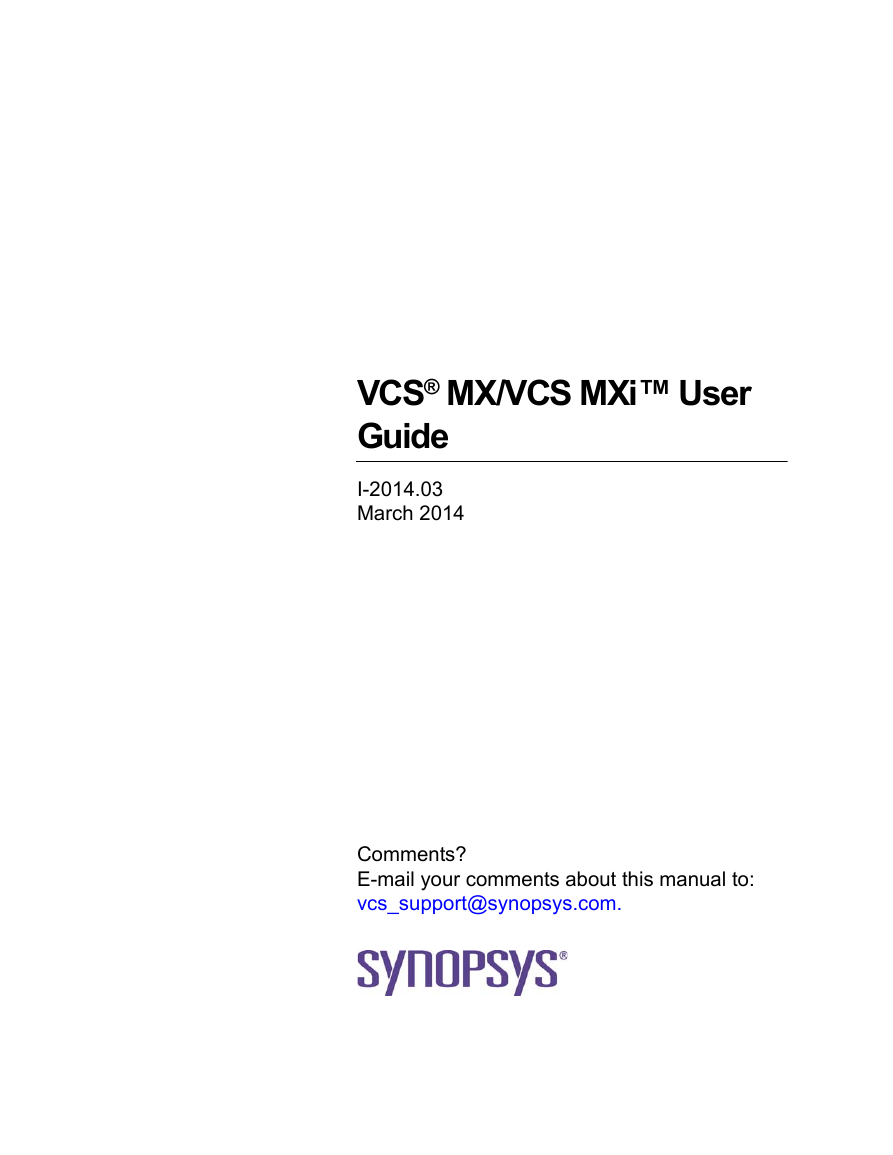
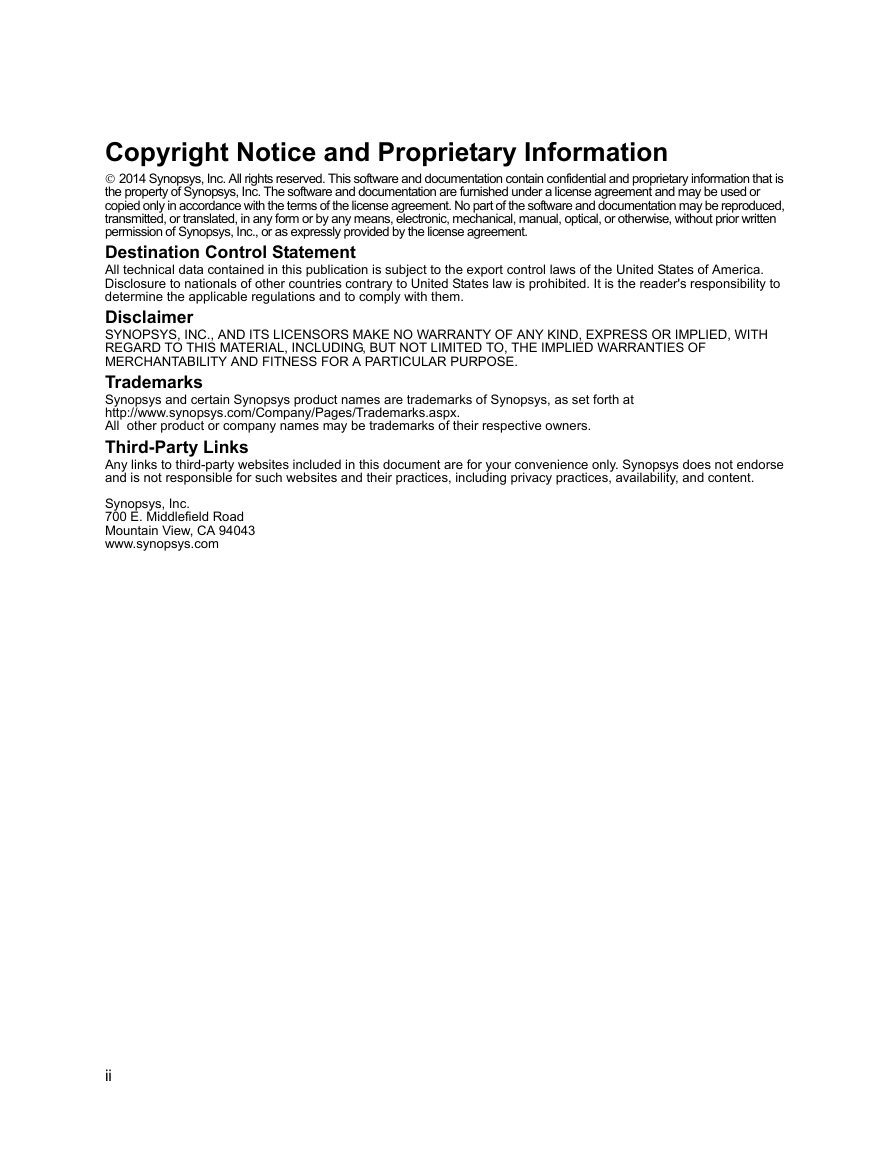

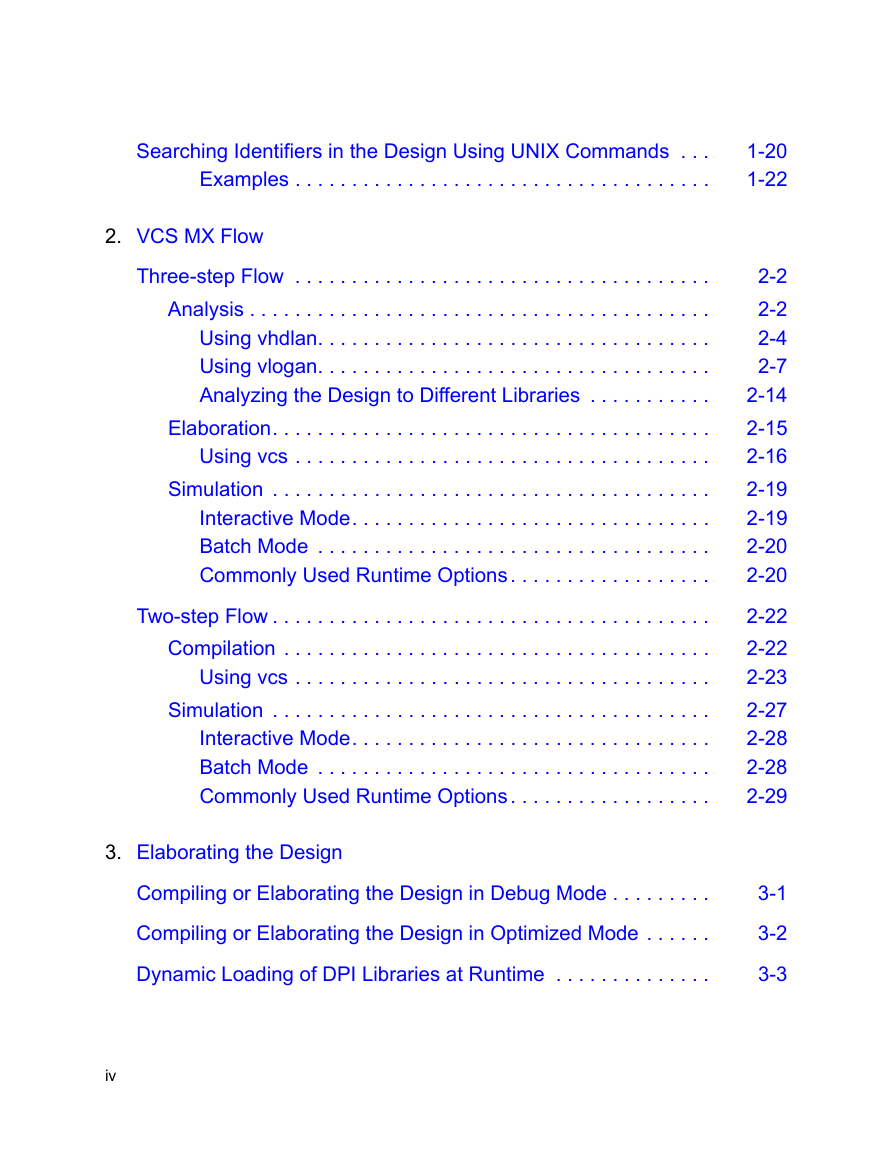
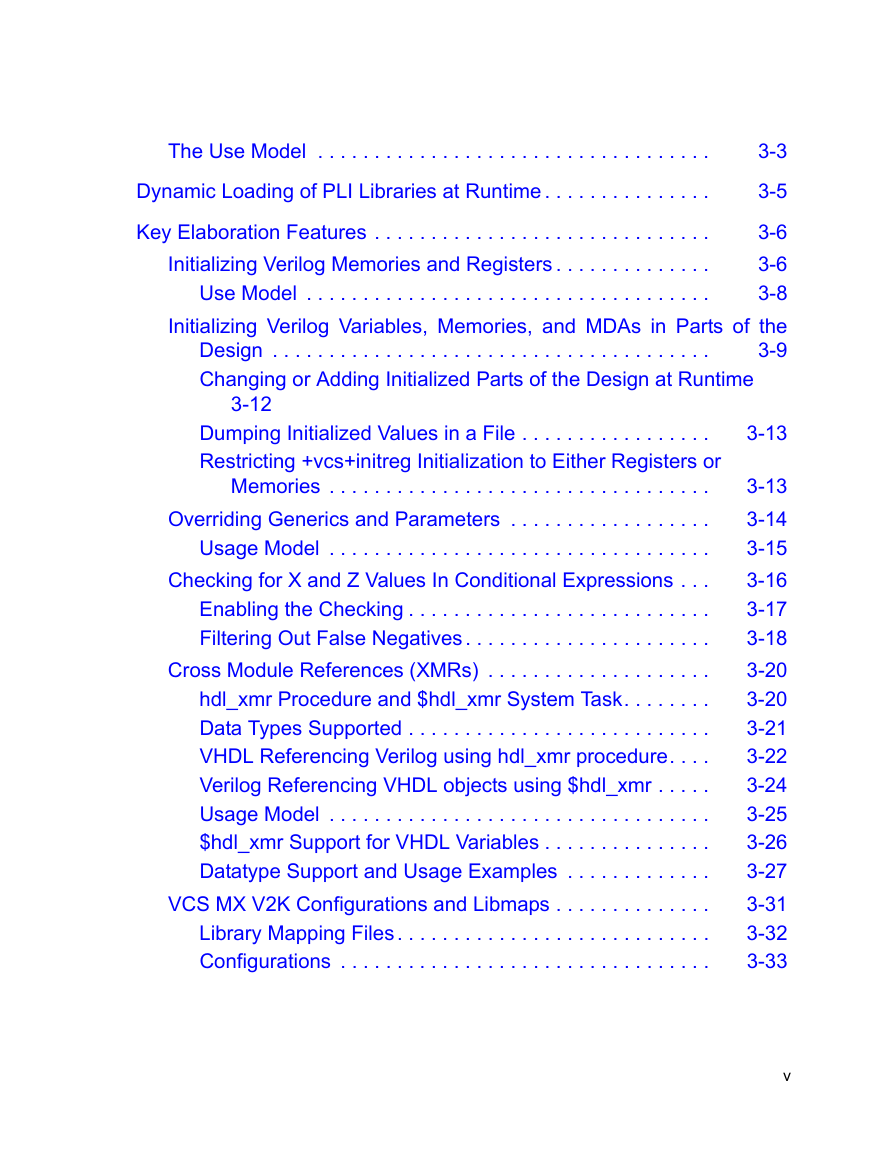
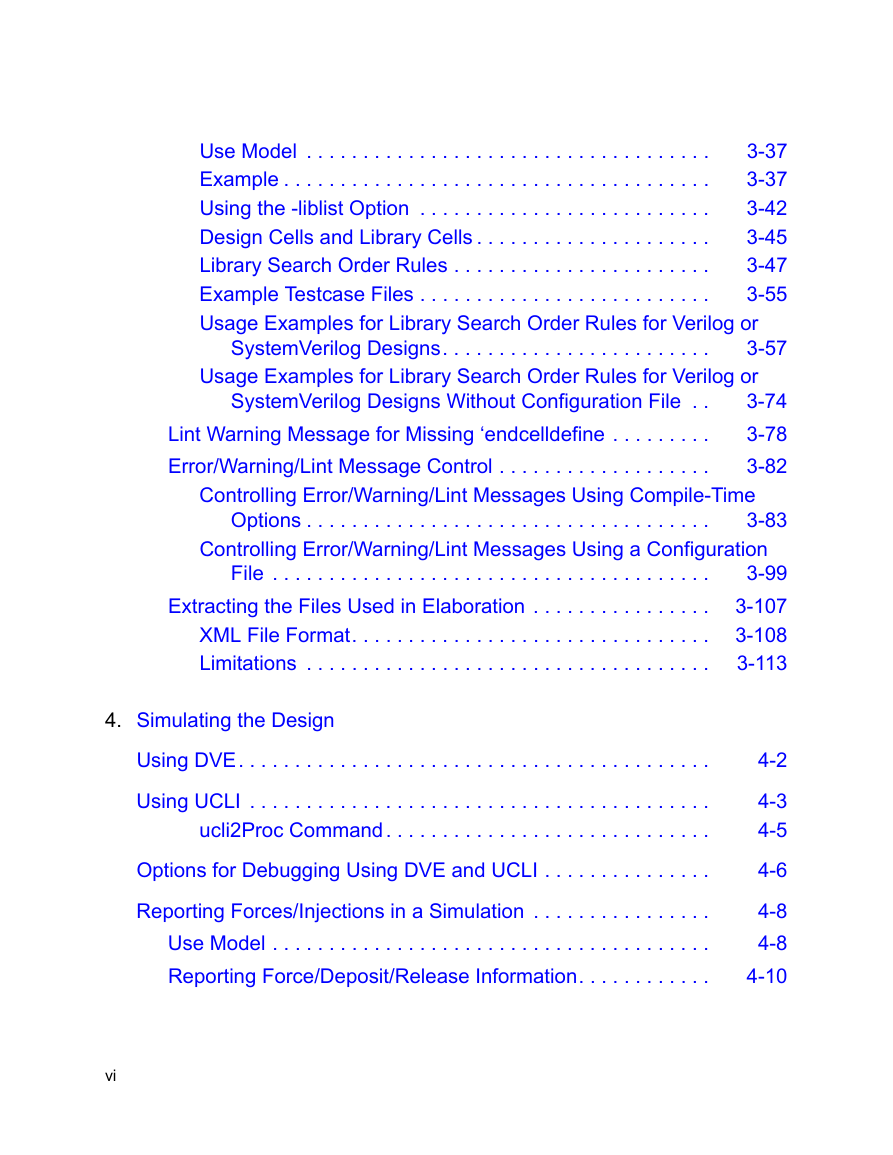

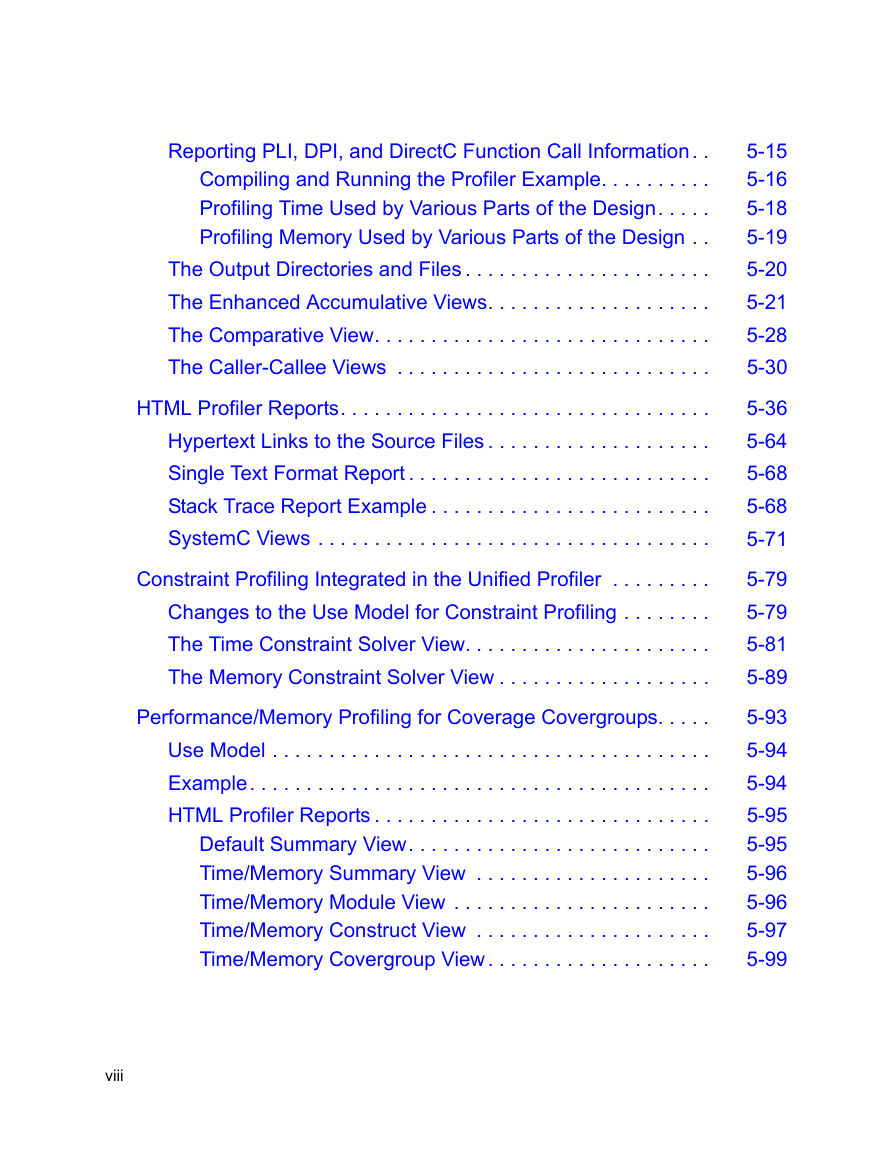








 2023年江西萍乡中考道德与法治真题及答案.doc
2023年江西萍乡中考道德与法治真题及答案.doc 2012年重庆南川中考生物真题及答案.doc
2012年重庆南川中考生物真题及答案.doc 2013年江西师范大学地理学综合及文艺理论基础考研真题.doc
2013年江西师范大学地理学综合及文艺理论基础考研真题.doc 2020年四川甘孜小升初语文真题及答案I卷.doc
2020年四川甘孜小升初语文真题及答案I卷.doc 2020年注册岩土工程师专业基础考试真题及答案.doc
2020年注册岩土工程师专业基础考试真题及答案.doc 2023-2024学年福建省厦门市九年级上学期数学月考试题及答案.doc
2023-2024学年福建省厦门市九年级上学期数学月考试题及答案.doc 2021-2022学年辽宁省沈阳市大东区九年级上学期语文期末试题及答案.doc
2021-2022学年辽宁省沈阳市大东区九年级上学期语文期末试题及答案.doc 2022-2023学年北京东城区初三第一学期物理期末试卷及答案.doc
2022-2023学年北京东城区初三第一学期物理期末试卷及答案.doc 2018上半年江西教师资格初中地理学科知识与教学能力真题及答案.doc
2018上半年江西教师资格初中地理学科知识与教学能力真题及答案.doc 2012年河北国家公务员申论考试真题及答案-省级.doc
2012年河北国家公务员申论考试真题及答案-省级.doc 2020-2021学年江苏省扬州市江都区邵樊片九年级上学期数学第一次质量检测试题及答案.doc
2020-2021学年江苏省扬州市江都区邵樊片九年级上学期数学第一次质量检测试题及答案.doc 2022下半年黑龙江教师资格证中学综合素质真题及答案.doc
2022下半年黑龙江教师资格证中学综合素质真题及答案.doc